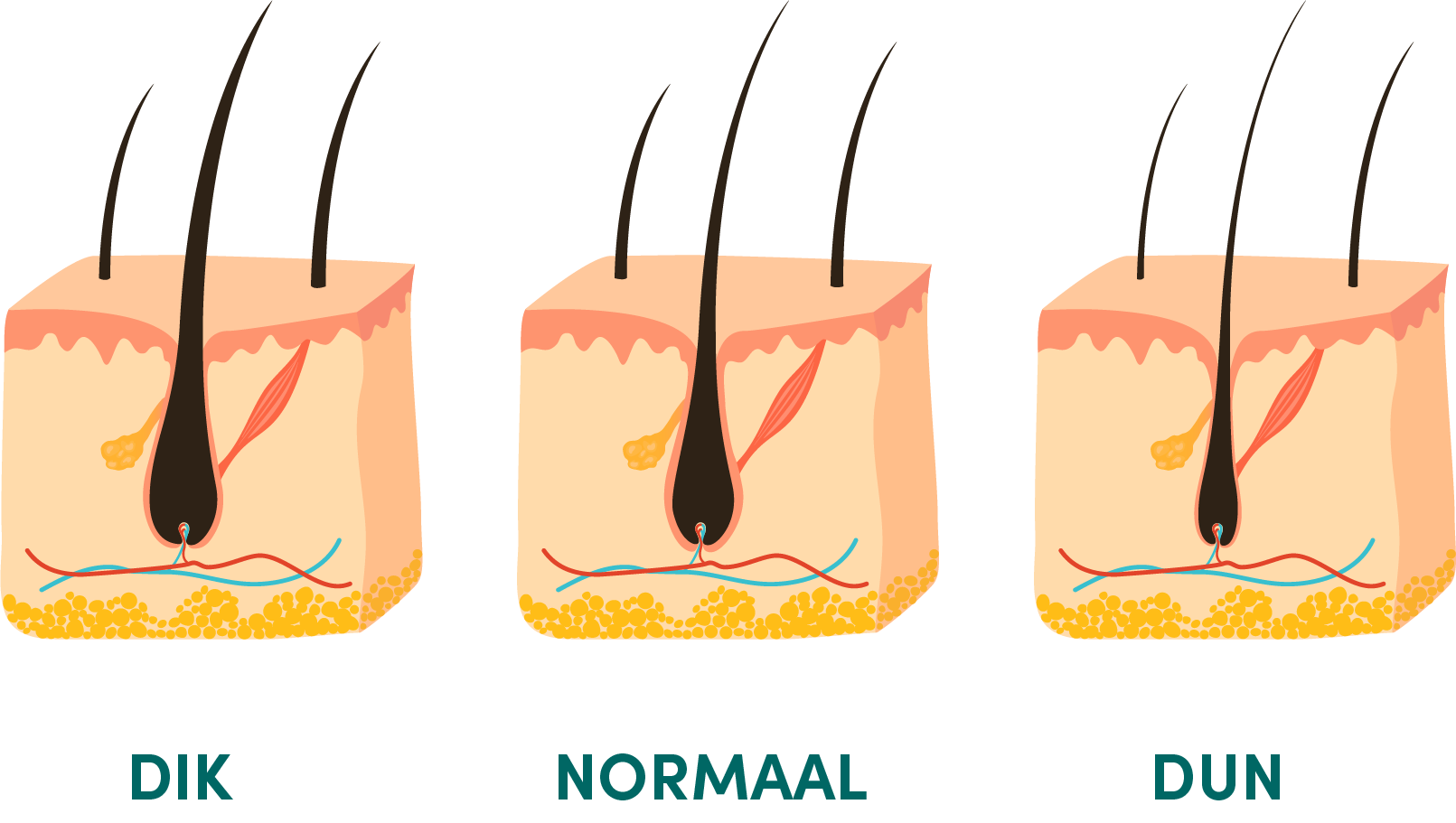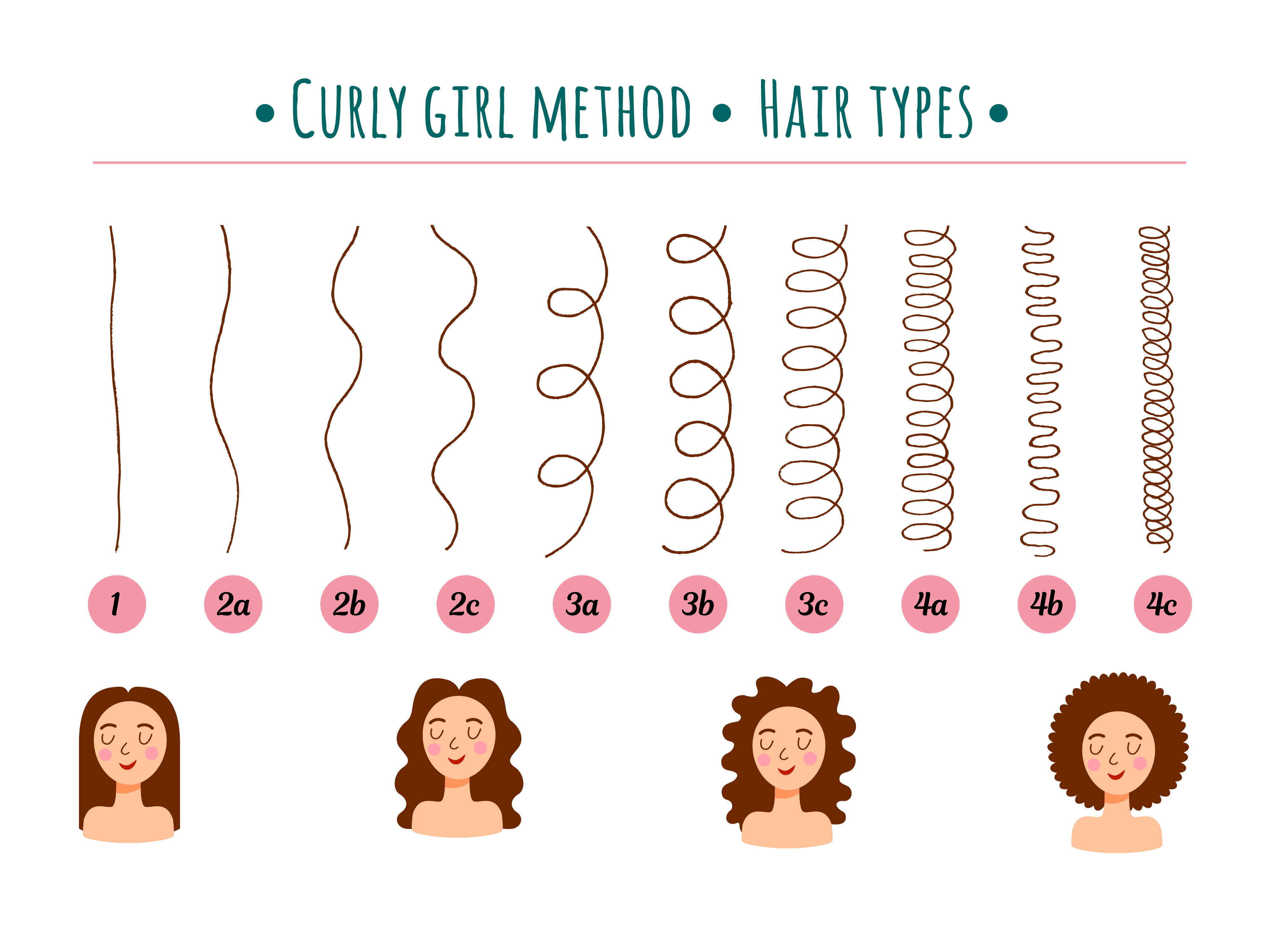buy the right products;
Determine your hair properties
We have simplified the determination of your hair properties. The fact is that your hair is made up of proteins so every hair needs protein to a greater or lesser extent.
It's up to you to find a good balance of protein and moisture. Look, feel and experience what certain routines/products do to your curls. Unfortunately, it doesn't work the same for everyone, if only it did then we would be done. This is really a personal process and as time goes by you will experience and understand better what your curls need.
Also, the way of styling, how much product, use of a curling brush, whether or not to use styling gel , are all factors that determine the final result.

Thickness / structure
Hearth density
This concerns the hair thickness of one loose hair . You can have fine, medium (normal) or coarse hair. You can test this by holding one loose hair up to the light. If you can hardly see the hair, you have fine hair. If the hair is clearly visible, you have coarse hair. If it's in between, you have medium hair.
You can also test it by holding one loose hair between your fingers and observing what you feel. If you feel almost nothing, you have fine hair. If you can clearly feel the hair, you have coarse hair. If it is in between, you logically have medium hair.
A third method is to compare a loose hair with sewing thread. Fine hair is thinner than yarn, medium hair is about the same thickness as yarn, and coarse hair is thicker than yarn.
Fine
People with fine hair do not have to have thin hair (in terms of density). Their hair can therefore still look very full. Fine hair is fragile and that is why it is often difficult to grow your hair long. You should therefore be extra careful with fine hair. Fine hair can become greasy more quickly and it often cannot handle heavy products very well.
Medium/normal
This hair structure is somewhere between fine and coarse hair.
Course
Coarse hairs are generally strong hairs. Coarse hair usually needs good hydration and usually less need for protein.
Porosity
Porosity is the term used in hair care science to describe how well your hair can absorb and retain moisture. Porosity is influenced by the outer layer of the hair (cuticle). This layer consists of scales. How porous your hair is is genetically determined, but it can also be influenced by external factors such as harmful ingredients in hair products, the heat of a straightener or hairdryer or chemical treatments such as dyeing your hair.
It is important to know the porosity of your hair, because it says something about whether you can use products with or without protein for your hair. You can have high, normal or low porosity.
Low
Low porosity hair has a cuticle with flat, overlapping scales. This usually makes the hair look a bit shiny (because it reflects light). But this closed cuticle layer prevents the hair from absorbing moisture very well. And once it is wet, it takes a long time to dry again, because the moisture remains on the hair before it is absorbed. Hair with low porosity is prone to build-up. It is therefore very important not to use too heavy or too many products.
Normal / Medium
Medium porosity hair often requires the least amount of maintenance. The cuticle layer is looser, allowing just the right amount of moisture to flow in and out of your hair.
High
In hair with high porosity, the hair cuticles are raised. This hair therefore often looks dull and not shiny . Because the hair cuticles are open, the hair can quickly absorb moisture, but the moisture also leaves at the same fast pace. This causes your hair to dry quickly and become tangled quickly. If your hair has been damaged by heat (blow dryer or straightener) or dyeing, chances are you have high porosity . This often means you can use slightly heavier products, but this also depends on your hair thickness. You can also use a sealing oil to retain moisture in your hair. And don't forget to use masks.
Determine porosity
You can determine porosity mainly by carefully observing your hair. These tests can help you.
Slip & Slide test
Grab a hair between your thumb and index finger and slide your fingers upwards over the hair (from tip to scalp). If you glide upwards easily without feeling any bumps, this often indicates low porosity hair . If you do feel bumps and they are not close together, you have medium porosity . If you feel many bumps in a row, you probably have high porosity hair . Those bumps you feel are the hair cuticles that are open.
Drying time test
Determine your hair porosity by looking at how long it takes for your hair to dry when you let it air dry:
- High porosity hair : dry within 2-4 hours
- Medium porosity hair : dry between 4 and 6 hours
- Low Porosity Hair : Needs more than 8 hours to dry
The drying time also depends on the thickness of your hair, the products you put in your hair and the humidity in your environment
Variable results
For many people, porosity is difficult to determine. Sometimes one test results in high porosity, while the other test results in low porosity. One hair can also differ in porosity from another hair. These are only tests that provide an indication. If the results of the above tests are not entirely clear to you, just start with products that are not too heavy. Try out what works and what doesn't work for your hair using the tips below.

Curl types
Use this image and your own curl to determine which curl type you have. This is not necessarily necessary to order the right products, but it does help in the process of better understanding and classifying your curls.
how, what, where?
